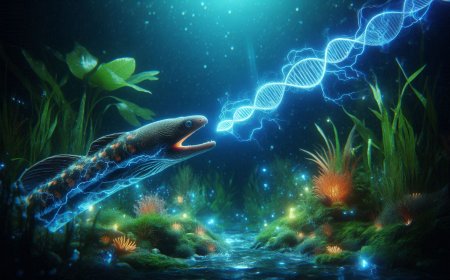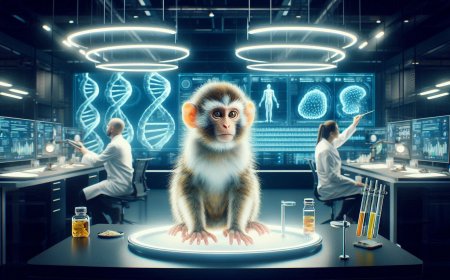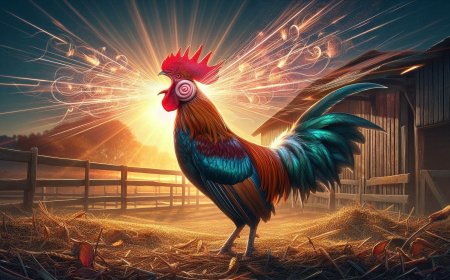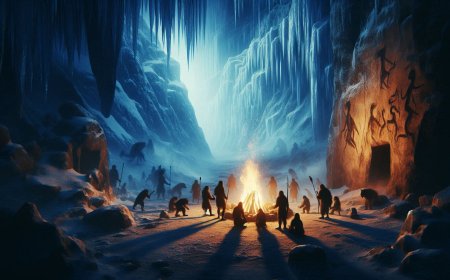Did You Know Some Scientists Eat the Organisms They Study? A Tradition Dating Back to Charles Darwin
Did you know some scientists eat the organisms they study? This quirky tradition dates back to Charles Darwin, who famously tasted puma, iguanas, and more during his scientific voyages. Discover the fascinating world of edible science, bug banquets, and curious researchers who combine science with culinary adventure.

In the world of science, curiosity often knows no bounds—and sometimes, it even extends to the dinner plate. While most people associate scientific research with test tubes, microscopes, and fieldwork, there exists a lesser-known tradition among certain biologists and naturalists: consuming the organisms they study. As strange as it may sound, this practice isn't a modern-day eccentricity. In fact, it dates all the way back to the legendary naturalist Charles Darwin.
The Curious Case of Charles Darwin: Naturalist and Adventurous Eater
Charles Darwin, best known for his theory of evolution by natural selection, was not just an observer of life—he was also an occasional consumer of it. During his five-year voyage aboard the HMS Beagle, Darwin developed a taste for the exotic animals he encountered around the globe.
Darwin was a founding member of the “Glutton Club” during his time at Cambridge University, a group that sought to sample animals not typically found on the British dinner table. While most university students might have contented themselves with roasted chicken and pudding, Darwin and his clubmates dined on hawks, owls, and even a brown owl he described as “indescribable.”
But it was on the Beagle where Darwin’s adventurous palate truly expanded. He ate puma meat in Argentina, which he described as “remarkably like veal,” and sampled armadillos, agoutis, and iguanas. He even reportedly tasted giant tortoise and Galápagos hawk, foods that would be ethically questionable by today’s conservation standards.
The Tradition Lives On: A Tasty Approach to Taxonomy
Inspired by Darwin, a number of scientists—particularly zoologists and ecologists—have continued the tradition of sampling their specimens. Far from being merely a stunt or eccentric behavior, there are a few reasons behind this unusual practice:
1. Scientific Curiosity
For some researchers, tasting an organism can offer another layer of understanding, especially when studying the traditional uses of animals in indigenous cultures. In ethnobiology, for example, understanding how local communities interact with and consume species can provide key ecological insights.
2. Culinary Exploration
Biologists sometimes find themselves in remote parts of the world, where local delicacies include species unfamiliar to outsiders. Trying these foods can be both a way to respect local customs and expand their own knowledge of the natural world.
3. Conservation Awareness
Ironically, tasting endangered or rare species in the past has helped raise awareness about the need to protect them. While not a justifiable practice today, some scientists argue that these experiences helped spark conservation conversations decades ago.
Modern Examples: Scientists with a Taste for the Unusual
- William Beebe, an early 20th-century ornithologist and explorer, was known to taste the birds he studied, recording both their biological data and culinary characteristics.
- Joe Staton, a biologist at the University of South Carolina, once ran a class called "The Edible Zoo," where students could taste legally sourced exotic meats to learn about biodiversity.
- In some universities, “Bug Banquets” are organized where entomology students (and brave members of the public) can sample roasted crickets, mealworms, and chocolate-dipped ants.
Ethical and Legal Considerations
In today's scientific community, this practice is far more controversial. Conservation laws, ethical research standards, and increased awareness about endangered species have largely curbed the trend. Modern scientists are far more cautious and respectful when it comes to consuming wildlife, focusing instead on non-invasive study methods.
However, insect consumption (entomophagy) continues to be a growing trend, both scientifically and commercially. Researchers studying edible insects often taste their subjects as part of broader research into sustainable protein sources and food security.
A Legacy of Curiosity
Though the idea of scientists eating their research subjects may seem bizarre or even offensive today, it stems from a deep-seated curiosity and an immersive approach to understanding life on Earth. Charles Darwin didn’t just theorize about the diversity of species—he experienced it firsthand, with fork and knife in hand.
In the end, whether it’s a crunchy cricket at a bug fair or a historical note about Darwin’s dinner choices, this curious tradition reminds us of how personal, and sometimes peculiar, the pursuit of knowledge can be.
Fun Fact: The puma Darwin ate in Argentina wasn’t an isolated experience. He was so impressed by the flavor that he made detailed notes on its texture and resemblance to veal—notes that were just as detailed as his observations on its behavior and habitat!
What's Your Reaction?








































































































